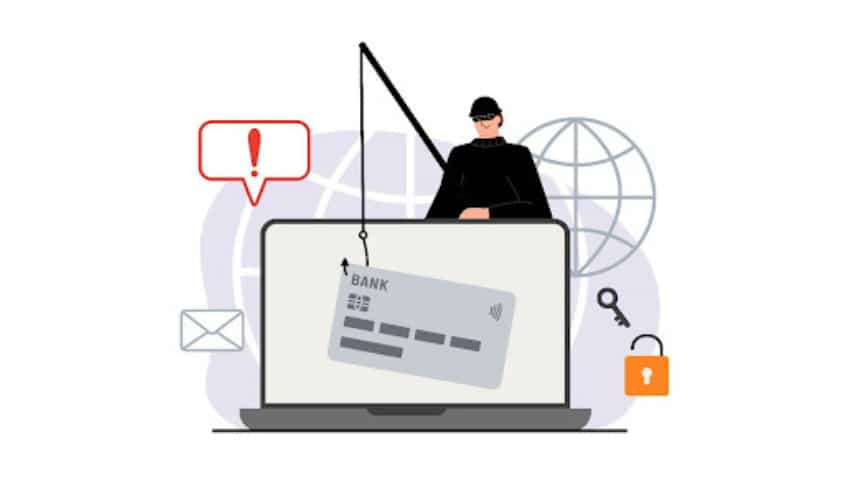In todays’ era, risks are hand-in-hand, interconnected and as complex as the evolving technological advancements in every industry. The banking and lending sector in India have also not been left behind and are steadily delayering their traditional beliefs and yielding to technological transformations.
The Indian banking system has indeed seen a drastic change in its way of operating from its pre-Covid era to the current post-Covid times. The sheer digitization disruption brought on by the adoption of technology has levitated the banking and lending processes to maintain higher capital buffers, improved asset quality due to accelerated operability TATs, which has consequently led to a sharp increase in the credit growth statistics for this sector.
Let’s look at some numbers here that affirm the growth story of bank loan asset volumes from Public Sector Banks (PSBs) and Private Sector Banks (PVBs) in 2022 alone. PSBs marked a total growth of 61,96,768 crores in standard loan assets over 2021 figure of 55,87,450 crores, while the PVBs 2022 loan assets stood at 43,63,690 crores over their 2021 figure of 37,57,240 crores.
Covid was a vital catalyst in changing customer behavior radically towards wanting services on a digital platform. And with the regulators and government stepping up with rapidly evolved digital frameworks and support measures, the banking and lending sector has witnessed a new era of digitization.
With technological developments in the sector galloping ahead, so is the implementation of various tech-enabled measures that combat frauds on both grounds, cyber malware as well as traditional frauds from the prevailing manual bank operating processes.
This is where a silver era in banking and lending fraud is seen emerging. The Indian banking system saw a sharp fall of 46% in financial frauds reported for April to September 2022 to the tune of 19,485 crores. During the same period in the previous year, they had reported frauds to the amount of 36,616 crores.
The evolved quantum of digital integrations, adoptions and advancements in the banking sector reflects a radical declining financial frauds graph of approximately 67% from the pre-Covid 2019-20 period amounting to 1,85,391 crores, falling sharply in the post-Covid period of 2021-22 to 60,389 crores.
Though the RBI reported that the number of fraud incidents was higher by 1337 crores in the period between 2022-23 April to September than that of the same period the previous year, most of the frauds reported in a year could have occurred several years prior to the year of reporting and are carried forward. These frauds reported by the RBI are categorized only if they amount to Rs 1 lakh and above.
This silver era in banking and lending fraud is majorly attributed to the highly progressive digital market that has paved the way for elegant and smart fraud risk solutions to be innovated side-by-side along with technological advancements, making fraud detection more efficient and effective.
One such technology that has played a key role in significantly reducing the volume of frauds and fraud prevention is machine learning. Machine learning algorithms can analyze large amounts of data in real-time, identifying patterns, and anomalies, giving out early warning signals that can indicate varying degrees of fraudulent activity. These algorithms are continuously trained on historical data to improve their accuracy over time.
Another technology that has proven effective in detecting fraud is biometric authentication. This involves using unique physical or behavioral characteristics such as fingerprints, facial recognition, or voice recognition to verify the identity of customers. Biometric authentication can help prevent identity theft and other types of fraud by ensuring that only authorized individuals have access to their financial accounts.
Additionally, data analytics tools are being heavily adopted to identify and track suspicious transactions in real-time. By analyzing transaction data, these tools can identify unusual patterns of activity that may indicate fraud. This can help banks and lenders take swift action to prevent further fraudulent activity.
The main motto of these fraud mitigating technological developments is to understand the negative implications of fraud on the financial stability of the banking institutions. Innovation in these tools is rather rapid and cyclical, covering the vast grounds of the complex banking internal structures, helping them to foster quality and value in their reputational, operational, and business objectives.
Eliminating Frauds, the Perfios Way
Over the years, Perfios has explored and understood the changing dynamics between people and technology and has deeply committed to continuous digital innovations. To combat the traditional as well as newer variants of frauds arising from digital adoptions in the Indian banking system, Perfios has brought in its rich technological expertise to build AI/ML powered fraud risk API suits. Enabling a flexible architecture in digitally onboarding banks, the Perfios fraud risk solutions are designed to manage risks emerging from financial losses, environmental factors, disruptions, and vulnerabilities.
Leveraging the trifecta; data analytics, technology and human capabilities, Perfios helps redefine the fraud mitigation methods with three marquee solutions.
TotalKYC
TotalKYC is India’s largest AI powered digital onboarding and risk mitigating API suite. With access to 100+ APIs, the TotalKYC platform enables the power of automation into the onboarding process through Optical Character Recognition (OCR) and matching algorithms, pulling information from 200+ sources. An in-house built product, it accurately and swiftly performs document verifications across individual and business identities, address, income and more, rendering banking institutions with unparalleled agility and unmatched cost efficiency. In its integrations till date, TotalKYC has averted monthly frauds amounting to 2500+ crores.
KDiscover
A one-of-a-kind unified offering from Perfios that presents deep insights into customer profiles by screening application information based upon given information, recursively scanning public sources for additional information and independently authenticating, and scoring applicants in order to trigger or alert the system in case of suspicious applicants. A unique product that accurately risk-scores an application for all KYC related verification, KDiscover provides a tangible and definite risk score that is an unambiguous representation of the risk involved in onboarding a customer or employee.
KDiscover combines the power of multiple technologies such as NLP, graph, quantum computing, AIOps amongst others to bring about a revolutionary fraud detection solution that has two main verticals:
- Advanced Employment Verification
- Risk Identification
By leveraging the AI-powered technology, the entire process is truncated to 30-40 seconds with the full list of checks performed across the board.
Early Warning System EWS
There is a dire need to identify frauds in their earliest stages and stop them in their tracks before they compound and culminate in extensive financial and operational losses. Perfios is bringing in its technological prowess by designing an Early Warning System (EWS) solution that senses potential volatilities and identifies frauds in their earliest stages, eliminates errors such as manual omissions and other oversights, and safeguards the bank's assets.
The marquee solution presents early warning indicators or signals marking the overhanging threats to the revenues or credibility of the banks. These indicators are further classified into financial, behavioral, geographic, industry, and perception categories. EWS enables banking institutions to be forewarned, take corrective actions against potential risks, and avoid hazardous incidents in their scope.
In conclusion, the rise of AI and ML digitization has brought both benefits and challenges to the banking and financial sector in India. While technology has made financial transactions more efficient and convenient, it has also created new avenues for fraudsters to exploit. The "Silver Era" of banking and lending frauds has brought with it evolved and advanced technologies today to help prevent fraud in real-time with the banking and lending sector in India, and the fintech industry is continuously aiming to keep customers' financial data and transactions safe and secure.
About Perfios: Perfios Software Solutions is India’s largest SaaS-based B2B fintech software company enabling 900+ FIs to take informed decisions in real-time. Headquartered in Bengaluru, India, Perfios specializes in real-time credit decisioning, analytics, onboarding automation, due diligence, monitoring, litigation automation, and more.
Perfios’ core data platform has been built to aggregate and analyze both structured and unstructured data and provide vertical solutions combining both consented and public data for the BFSI space catering to their stringent Scale Performance, Security, and other SLA requirements.
You can write to us at connect@perfios.com
(Above mentioned article is a sponsored feature, This article is a paid publication and does not have journalistic/editorial involvement of IDPL, and IDPL claims no responsibility whatsoever)
Get Latest Business News, Stock Market Updates and Videos; Check your tax outgo through Income Tax Calculator and save money through our Personal Finance coverage. Check Business Breaking News Live on Zee Business Twitter and Facebook. Subscribe on YouTube.
07:01 PM IST













 Apple Vision Pro production halted amid weak demand: Report
Apple Vision Pro production halted amid weak demand: Report realme 14x sets new durability standards with first IP69 under Rs 15,000
realme 14x sets new durability standards with first IP69 under Rs 15,000 Acer M Series Hybrid MiniLED Televisions arrive in India: Here's what you need to know
Acer M Series Hybrid MiniLED Televisions arrive in India: Here's what you need to know Cedar-IBSi Capital to fund 10-15 startups in fintech sector
Cedar-IBSi Capital to fund 10-15 startups in fintech sector  Expect more tech adoption, strategic partnerships: Nasscom Chairperson
Expect more tech adoption, strategic partnerships: Nasscom Chairperson